Every year on June 23rd, Porto explodes into a citywide party for the São João Festival. I couldn’t resist joining the fun.
From midnight fireworks and wild street dancing to the smoky scent of grilled sardines and the playful smack of plastic hammers, São João is Porto’s most electrifying and unforgettable night. The festival honors St. John the Baptist, but honestly, for most people it’s just about letting loose, laughing, and feeling the city’s heartbeat.
The whole city comes alive. Families and friends spill into the streets, sharing music, wine, and the city’s famous food.
Colorful lights dangle above every alley, and quirky traditions—like tapping strangers with soft hammers—pop up everywhere. I jumped right in.
Spending São João in Porto showed me a different way to travel. I felt like I belonged, even if just for a night.
If you want a night you’ll never forget, stick São João on your Portugal bucket list.
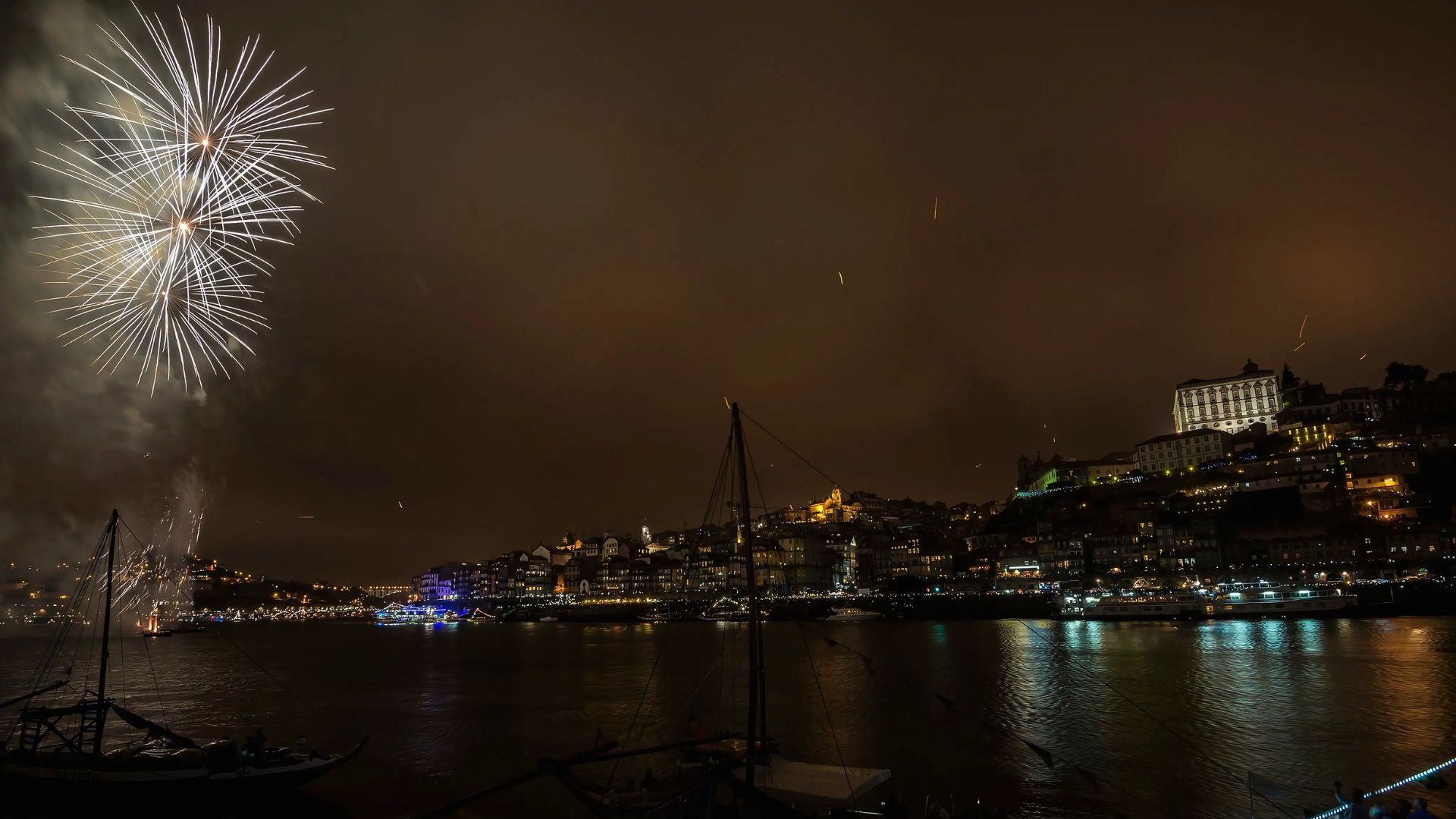
What Is São João Festival in Porto?
Every June, Porto throws its biggest bash—Festa de São João. Streets burst with color, music, and old customs.
This festival honors St. John the Baptist and pulls the whole city together for two wild, can’t-miss nights.
History and Origins
Locals call it Festa de São João do Porto, and it goes way back to the Middle Ages. It started as both a Christian and pagan party, mixing ancient rituals with Catholic devotion to St. John.
Before anyone thought of fireworks, people in the Douro region celebrated the summer solstice with bonfires, herbs, and songs. The Catholic Church later added St. John to the mix, blending everything into a festival that feels very northern Portugal—especially here in Porto.
Today, everyone still honors St. John, but the vibe is all about community and local pride. When June 23 and 24 roll around, I feel like I’m stepping into living history. For locals, these dates aren’t just important—they’re the highlight of summer.
Traditions and Customs
Some traditions stand out right away. The most famous? Gently tapping friends and strangers with soft plastic hammers.
It’s silly, but laughter fills the air all night. Sardines sizzle on grills everywhere, sending waves of smoke down the streets.
Eating sardines on bread is a festival must. Folk music blares from every corner. Locals light up colorful paper balloons, called balões, and watch them float into the sky.
Stalls sell manjericos—tiny pots of basil with little poems hidden inside. People give these as tokens of love or luck.
Dancing, drinking, and hugging strangers just happens. At midnight, fireworks explode over the Douro River, and honestly, nobody wants the party to end.

How Porto Comes Alive in June
From early evening on June 23, Porto transforms. Thousands flood the city center—especially Ribeira and Baixa—gearing up for a sleepless night.
Bright lights, music, and laughter spill out of every window onto the cobblestones. Families picnic in public squares, and street vendors hawk grilled sardines, beer, and sweet treats.
The Metro do Porto keeps running late because nobody wants to go home before sunrise.
I love watching the traditional Regata of Rabelo Boats on the Douro River on June 24. Somehow, I always end up staying out until daylight, grabbing breakfast with locals and other travelers in the cool morning air.
If you want to see Porto at its wildest, São João is the moment.
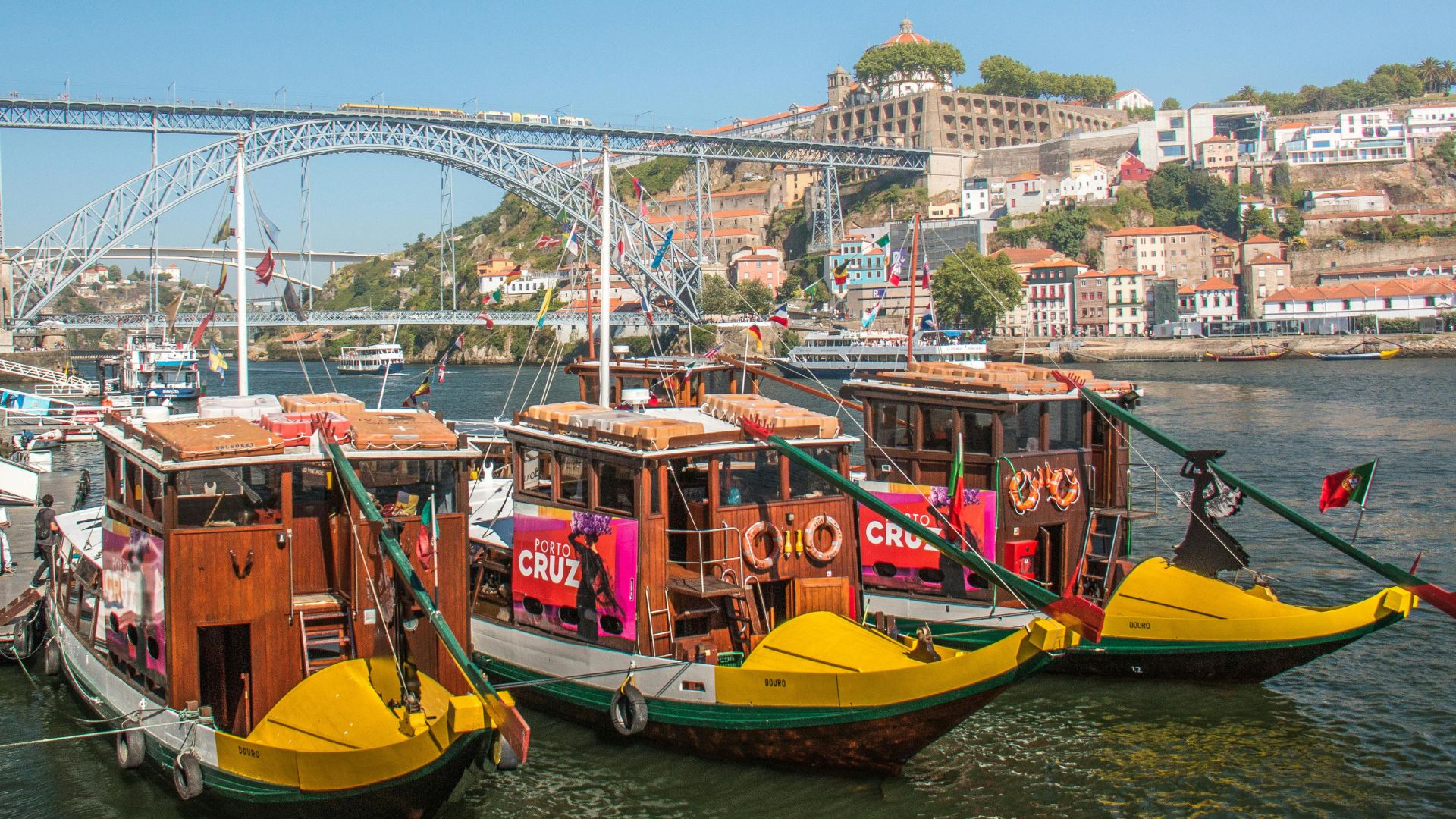
Unmissable Experiences: A Night Full of Traditions
Every moment during São João in Porto brings a different kind of energy. The night buzzes with food, quirky customs, and spirited rituals that everyone, even visitors, can join.
Sardines and Street Food Delights
Grilled sardines are everywhere, hands down the festival’s favorite snack. That smoky aroma is impossible to ignore.
I joined long lines of locals, eager for sardines slapped on rustic bread—crispy skin and all.
Classic dishes like caldo verde—a creamy potato and kale soup with a swirl of olive oil—and bifanas, those juicy pork sandwiches, show up at every turn.
Vendors toss sweet roasted chestnuts over open flames. Tables spill into the streets, and it’s easy to enjoy each bite with a glass of vinho verde or a cold beer.
Don’t be shy—eat with your hands, chat with strangers, and just let the food and atmosphere sweep you up.
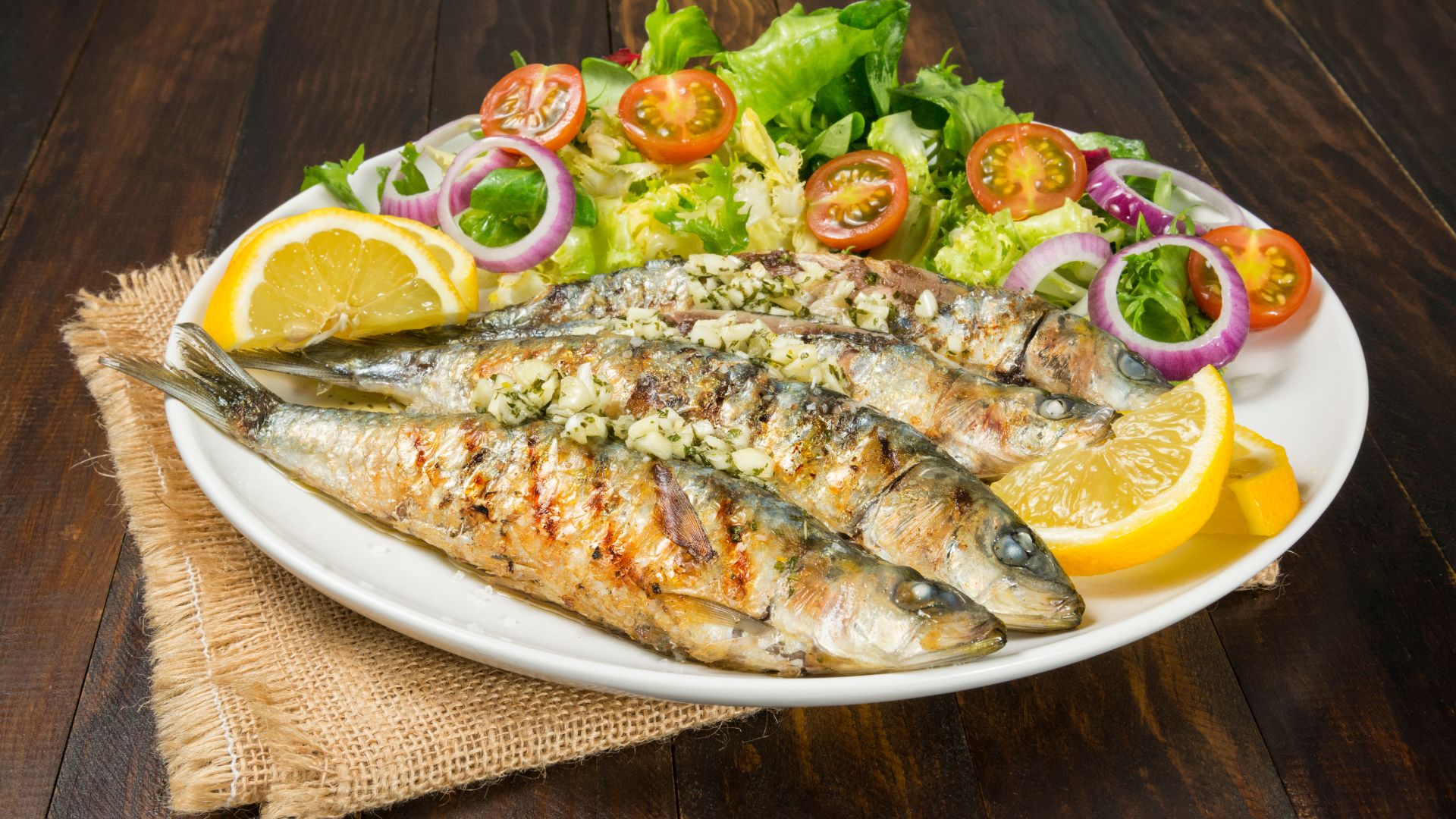
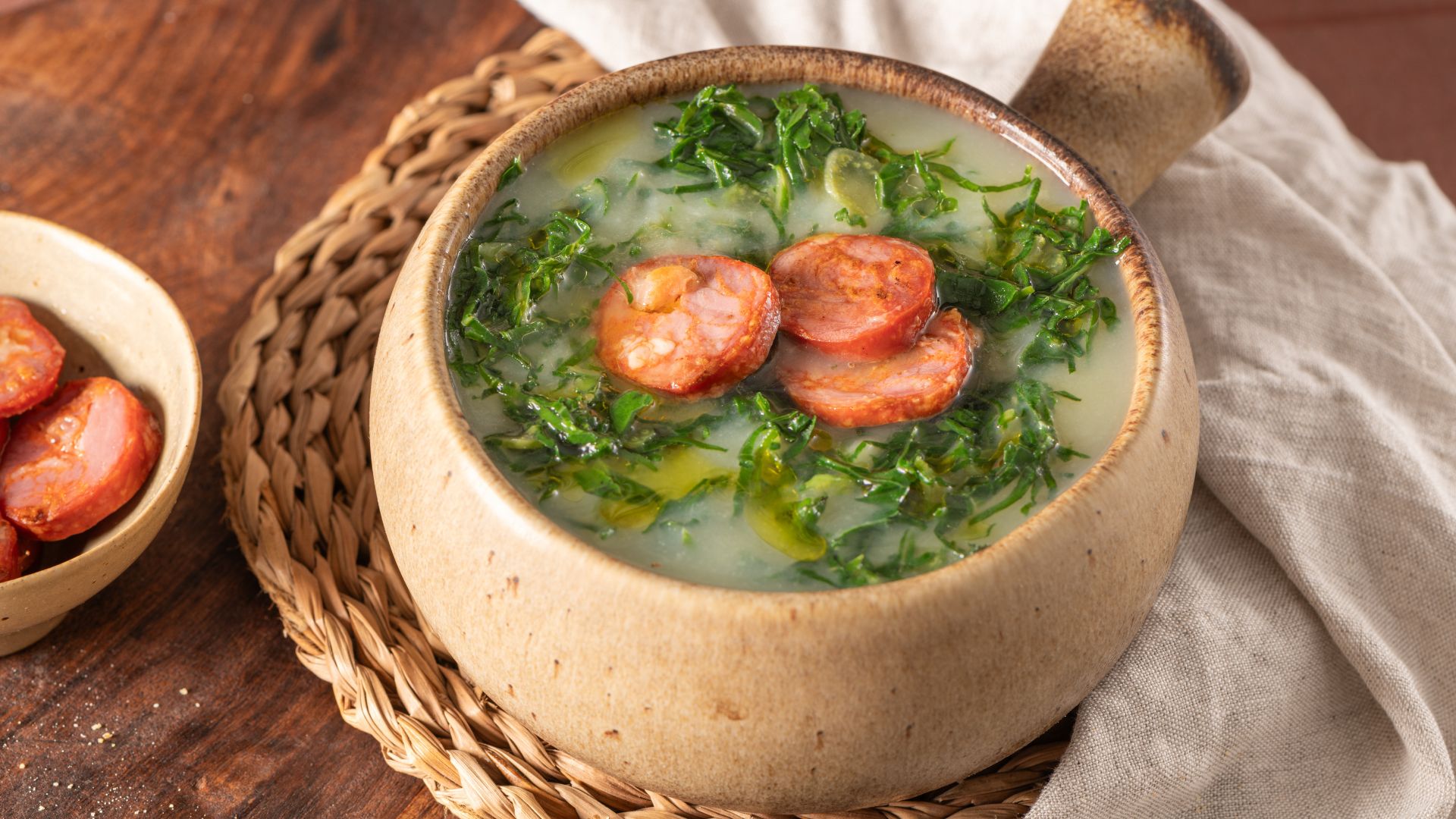
Plastic Hammers and Wild Leek Rituals
I’ve never seen anything quite like the plastic hammer tradition. Suddenly, I found myself in the middle of joyful chaos, getting bopped on the head by squeaky hammers.
Kids and adults go after friends and strangers alike. It’s goofy and contagious.
Another local ritual? Wild leeks, or alho-porro. People wave them around, gently tapping others or pressing the garlic flowers to someone’s face.
Some say it brings good luck; others just love the silliness. These odd customs break the ice.
I made new friends by handing off an extra hammer and joining a group wielding wild leeks.
Jumping Bonfires and Basil Offerings
Later in the night, bonfires blaze in city squares. I watched brave souls—young and old—take turns leaping over the flames.
They say it brings good fortune and chases away bad spirits. Even just watching, the sparks and laughter felt magical.
Potted basil plants, topped with paper flags and poems, pop up everywhere. Locals gift them with sweet notes of affection.
The scent of basil, smoke, and grilled food is something I’ll always remember. When a vendor handed me a tiny basil pot, I felt like I belonged, even if just for a night.
Whether you’re jumping bonfires or swapping basil, you get swept up in old customs that make São João so special.
Where to Celebrate: Top Spots Around Porto
São João in Porto is all about picking your spot. The city center is wild, the riverbanks are packed, and neighborhoods by the sea offer a calmer scene.
You can even cross to Vila Nova de Gaia for a whole new perspective.
Avenida dos Aliados Festivities
Avenida dos Aliados, right in the heart of Porto, turns into a massive street party. I found the avenue packed with music stages, food stalls, and crowds from every neighborhood.
Everyone gathers here for the midnight fireworks countdown on June 23rd.
Grilled sardine stands and vinho verde stalls line the street. The plastic hammers never stop squeaking.
By 11 pm, the square is electric—thousands of people waiting together. Getting here is easy with public transport, but expect the metro to be jammed.
If you’re into shoulder-to-shoulder crowds and live music, this is your spot. I walked here and would definitely suggest arriving early if you want a good view.
Tip:
- Wear comfy shoes
- Keep your stuff close, because it gets packed
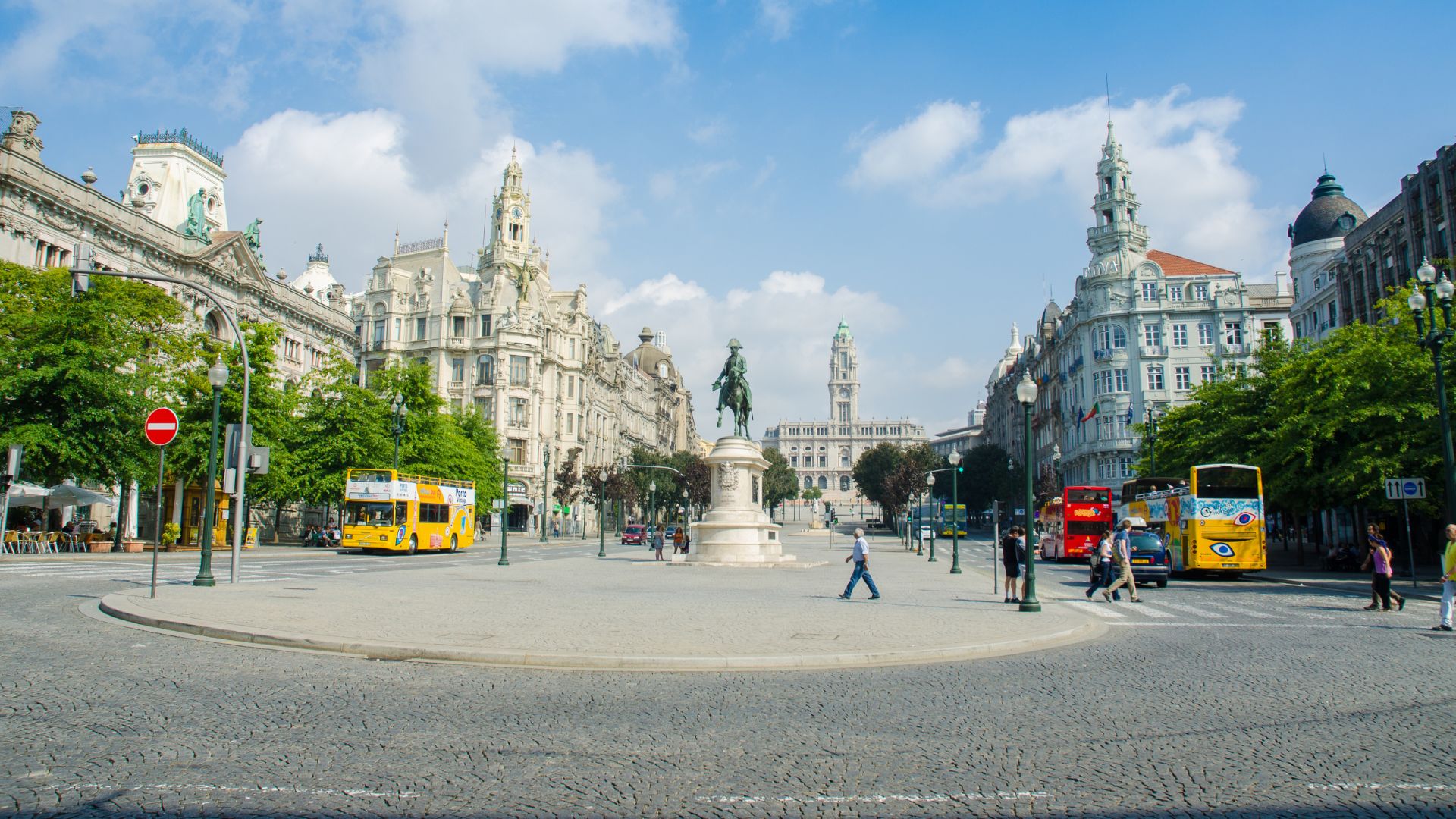
Riverfront Revelries on the Douro
The Douro riverfront brings a different buzz. I joined hundreds lining up along Ribeira (Porto side) and Cais de Gaia (across the river in Vila Nova de Gaia).
Everyone comes for the fireworks, which light up the sky above the Dom Luís I Bridge.
The smell of grilled sardines hangs over the river. Every table— restaurants and pop-ups—serves them nonstop.
Music plays everywhere, and lots of people bring their own food, turning the stone riverbanks into big picnics.
The city view here is stunning, especially when the fireworks start. The reflection on the water and neon-lit bridges are unreal.
Get here early—by 10 pm, it’s standing room only.
Must-see:
- Fireworks from the Douro riverbanks
- The light show on the Dom Luís I Bridge

Exploring Foz, Matosinhos, and Nearby Neighborhoods
If the city center crowds get too much, Foz do Douro and Matosinhos Beach offer a calmer way to join in. I hopped on a tram to Foz, where groups gather on the sand with bonfires, barbecues, and their own fireworks.
It feels local and relaxed, far from the downtown chaos.
Matosinhos is known for its beach and seafood. I saw families celebrating around huge tables loaded with sardines and caldo verde.
The hammers still make their rounds, but it’s way more laid-back. A stroll along the sea wall gave me space to breathe and enjoy the festival in peace.
Buses and trams run late, but ride-shares or a rented bike work too.
Great for:
- Quiet celebrations
- Beach bonfires
- Seafood without the crowds

Adventures Across the Dom Luís I Bridge
Crossing the Dom Luís I Bridge during São João is something else. I walked from Porto to Vila Nova de Gaia while fireworks exploded overhead.
Usually, the bridge is busy, but tonight it’s a parade—everyone carrying basil plants, hammers, and snacks.
From the upper deck, I caught some of the best fireworks views in town. People claim spots early, so bring a towel or blanket if you want to sit.
On the Gaia side, the party keeps going with live music, food, and more space than Ribeira. Metro stops have maps and directions posted everywhere.
Even late at night, crowds make the walk home feel safe.
Bridge highlights:
- Sweeping views of Porto and the Douro
- Easy access to street food and bars on both sides
- A unique spot to soak up the festival vibe
The Fireworks Show & Other São João Night Highlights
São João night in Porto is packed with moments that stick with you. The river buzzes with excitement, and everyone—locals and travelers—soaks up the festival’s best bits.
Fireworks Over the Douro River
The big highlight for me? The fireworks over the Douro River.
At midnight, the show kicks off around the D. Luís I Bridge, sending bursts of color over the water and echoing through the city.
Crowds pack both banks, but locals say Gaia has the best views. I grabbed a spot close to the river and watched the whole city glow under the fireworks.
The atmosphere is electric—people cheer, hug, and just stare in awe. Bring a blanket or perch on a stone wall for comfort.
The fireworks last about 15–20 minutes and sync up with music, which makes it even more moving. Definitely get there early if you want a good spot, because it fills up fast.
Midnight Balloon Releases
After the fireworks, another magical moment follows. At different points in the night—especially at midnight—people gather to release small hot air balloons, balões de São João.
These glowing paper balloons float gently into the sky, lit from inside.
A local family invited me to join them, showing me how to light and launch a balloon. Watching dozens of golden lanterns drift over the Douro felt peaceful, even with the party raging below.
Many families write wishes or memories on their balloons, hoping for good luck.
Safety tip: Only use balloons from authorized stalls—they’re made to reduce fire risk. If you’re on an upper street or terrace, the view of the sky filling with floating lights is unforgettable.
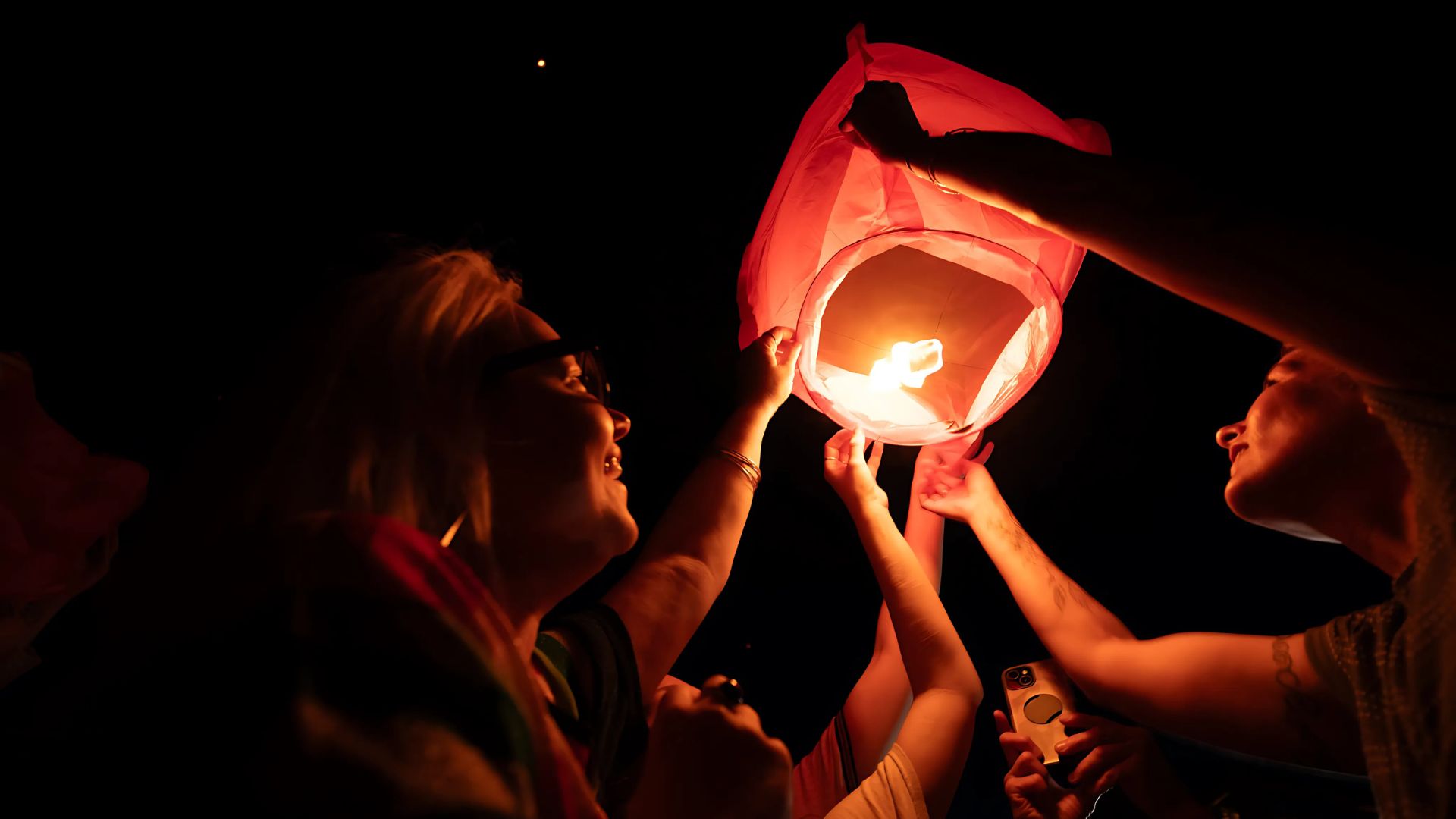
Rabelo Boats and the Regatta
Earlier in the evening, before the fireworks, I made my way down to Ribeira to check out the traditional rabelo boats crowding the Douro. These flat-bottomed wooden boats once carried port wine casks from upstream farms right down to Porto’s cellars.
During São João, locals decorate many of them with colorful flags, and sometimes there’s even live music playing on deck.
The big event is the annual Regata of Rabelo Boats. Teams race these historic vessels, and crowds gather along the banks to cheer them on. The regatta usually happens in the afternoon or early evening on June 24, but you’ll spot the rabelos on display the night before as part of the fun.
Getting close to the water, I admired the craftsmanship of these boats and snapped a bunch of photos. Their presence really nods to Porto’s deep wine heritage, and honestly, it gives the festival a special old-world flair you just don’t see anywhere else.

Live Music, Street Parties, and Dancing in the Streets
The São João Festival takes over Porto with excitement, loud music, and energy pouring out from every corner. As the evening fell, I got swept up in the unique sounds, local flavor, and a joy that only these streets seem to hold in June.
Free Concerts and Local Performers
All night, free concerts pop up around Porto, drawing locals and tourists alike. I was amazed by the number of stages set up in places like Avenida dos Aliados and in neighborhood squares.
Crowds gather to cheer on local bands and singers, and everyone seems genuinely thrilled to be there.
Most concerts don’t need a ticket—just show up and enjoy. I saw families, old friends, and even kids on their parents’ shoulders soaking in the vibrant music.
The city puts on these shows so everyone can celebrate, no matter their budget.
My favorite part? Young performers and traditional acts drew the same big crowds as modern pop groups. Whether it was someone with a guitar or a full brass band, the sense of community and celebration felt real.
Highlight Table:
| Venue/Location | Type of Performance | Entry |
|---|---|---|
| Avenida dos Aliados | Local bands, orchestras | Free |
| Casa da Música | Special festival concerts | Free/Paid |
| Neighborhood Squares | Folk and pop shows | Free |
Dancing, Rusgas, and Traditional Music
As the night kept rolling, street parties broke out everywhere. The real magic hit when everyone joined in the dancing.
I’d barely finished my grilled sardine before someone pulled me into a circle for a traditional “rusga”—a lively group dance.
Accordion players and drummers filled the air with music, making it impossible not to move. People wore colorful costumes, especially during rusgas, as small groups from different neighborhoods paraded and competed, all in good spirits.
The dancing felt like a street carnival, and even as a newcomer, I felt totally welcome.
Whenever I wandered down side streets, I spotted small gatherings—sometimes just ten people, sometimes closer to a hundred—dancing in true Porto folk heritage style. The lively beats and shouts of joy echoed everywhere.
What to look out for:
- Parades of rusgas between midnight and dawn
- Groups playing concertinas and drums
- Street dance competitions
- Invites from locals to join in!
Fado, Jazz, and Modern Acts
Not all the music sticks to tradition; São João mixes old and new. Close to midnight, I stumbled onto a soulful fado performance tucked into a tiny square.
The haunting vocals and guitar gave me a peaceful moment right in the middle of the party.
At bigger venues like Casa da Música, jazz musicians and modern pop acts played into the early morning. Ads for these shows were everywhere in the city all June.
I really love how the festival celebrates its roots without getting stuck in the past.
If you want a break from the street crowds, check the festival program for times and locations of fado sessions, live jazz, or even outdoor DJ sets. There’s always something different waiting around every corner during São João.
Insider tip: Keep an eye out for pop-up jazz trios late at night or surprise guest artists outside the main squares—those are the moments you’ll remember.
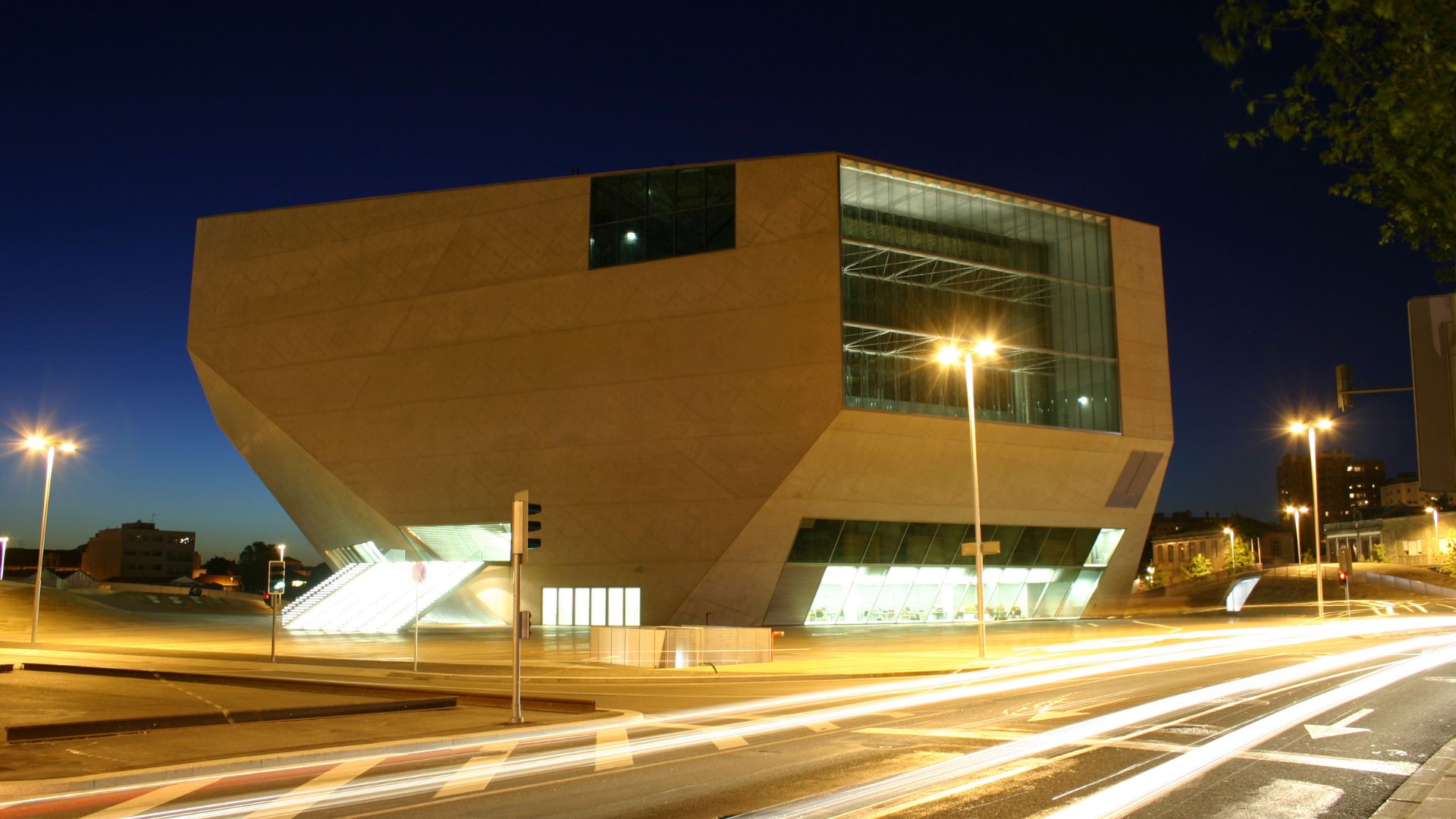
Essential Tips for Experiencing São João Like a Local
Getting the most out of São João in Porto takes a bit of planning, some creativity, and a willingness to dive into local traditions. The right moves can turn a fun night into something you’ll never forget.
Getting Around and Public Transport
On June 23rd, Porto fills up fast. I quickly realized that driving or hailing a taxi just wasn’t going to work with crowds everywhere.
Instead, I used the Metro do Porto, which ran extra late that night. Trains were packed, but they moved way faster than cars.
The best trick I found was to buy an Andante card ahead of time. I loaded it with enough credit to skip the long lines at ticket machines.
Bus and tram schedules sometimes shifted, and main roads closed off for pedestrians, so I kept an eye on live updates in the Metro app.
When it got late, stations like Trindade and São Bento got really crowded. I planned my exit a bit early or waited a little longer to avoid the rush.
Honestly, walking between festa hotspots was often the best way to soak in the atmosphere.
Making the Most of Your Night
The excitement starts long before sunset. By late afternoon, families and friends gather along the Douro riverbanks and main squares, grilling sardines and raising plastic cups of port wine for toasts to St. John.
Rua de Santa Catarina and Ribeira buzzed with life.
I made sure to grab a grilled sardine sandwich—messy, smoky, but so worth it. Around me, waves of people with colorful plastic hammers playfully tapped each other on the head, laughing nonstop.
I didn’t hesitate to join in, and locals happily handed me a hammer when I didn’t have one.
At midnight, the fireworks show over the river was a must-see. I squeezed in early for a good spot near Dom Luís I Bridge.
The show was loud, sparkling, and honestly, way more impressive than I expected. The party rolled on until sunrise, with open-air bars, dancing, and, yeah, even more sardines.
Unique Souvenirs and Takeaways
Honestly, I just couldn’t leave without grabbing a plastic São João hammer. It’s the real symbol of the night, isn’t it?
Shops started selling them days ahead of the festival, and by the big night, street vendors had them everywhere in every color you could imagine.
They’re light, super cheap, and barely take up any space in your bag.
I ended up picking up a little potted basil plant too—locals call it manjerico. Each one came with a tiny paper flag and a sweet rhyme wishing luck and love.
Honestly, holding onto it made me feel like I was taking a little piece of the festival home.
Handcrafted mini “cascatas”—those miniature St. John altars—made for such fun keepsakes. I grabbed a couple as gifts.
And yeah, I couldn’t resist keeping a bottle of local port wine. Whether I shared it with friends or just saved it for another night, every sip took me right back to that wild June evening.

